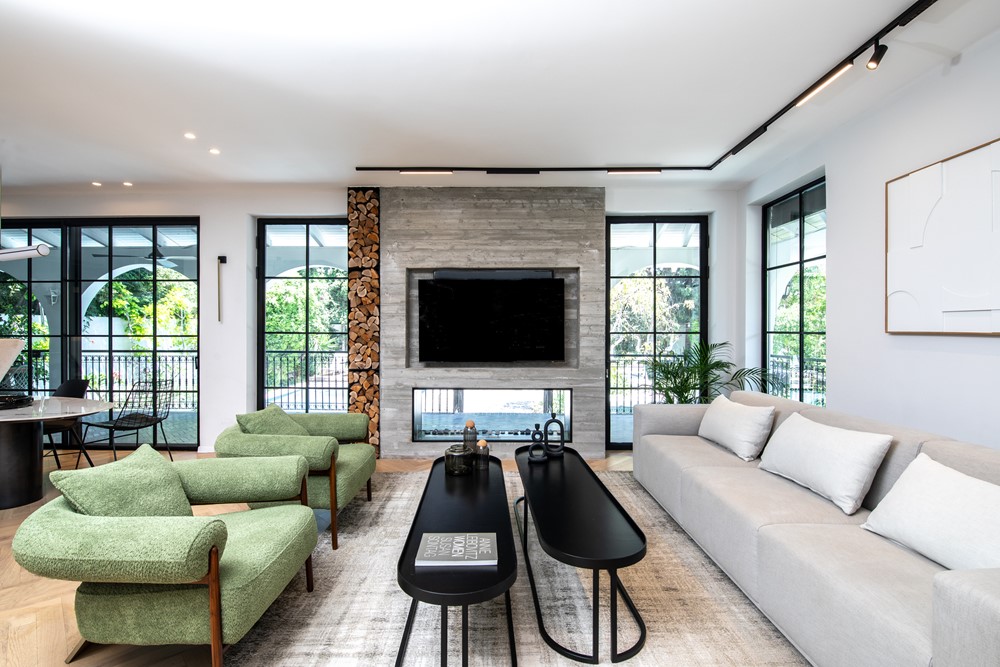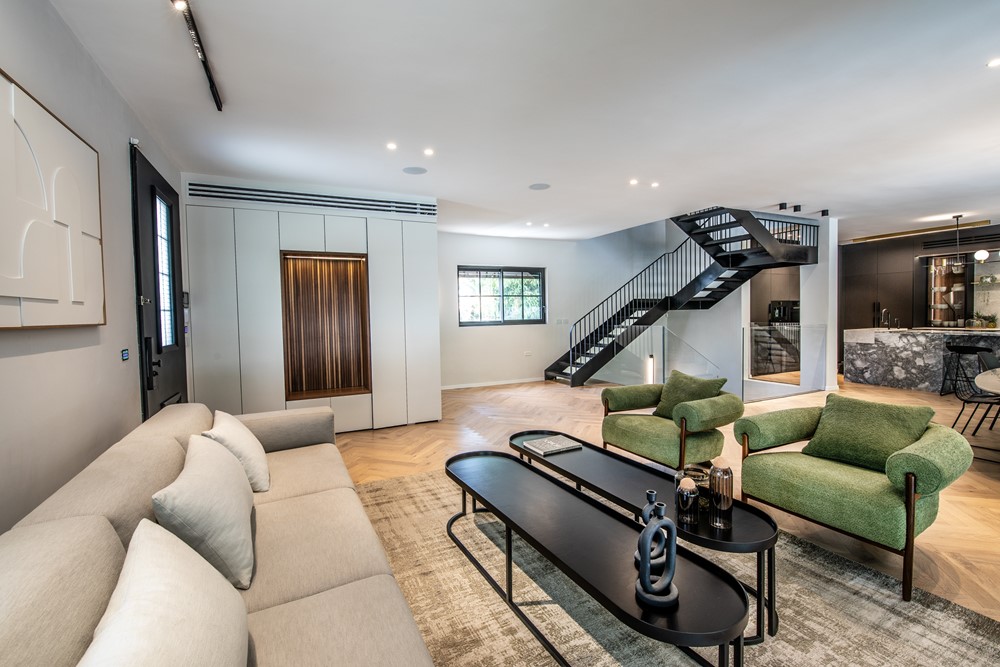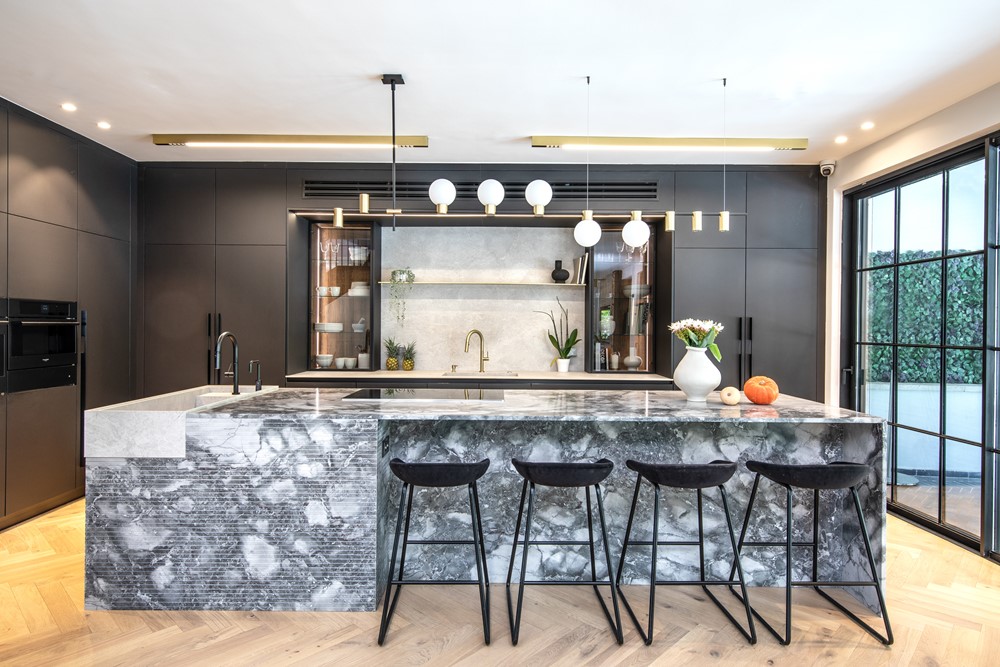Unique and One of a Kind by Boaz Snir: This house doesn’t look like any of the other houses in the neighborhood.
The arches around the facades, preserving existing elements alongside adapting the interior and exterior to the new homeowners’ wishes, the natural materiality, the color palette, all make this family home (located in a pastoral neighborhood in one of the Sharon cities) an especially experiential and powerful one. The architect Boaz Snir, who is responsible for the redesign, shares the process. Photography by Ran Erde.
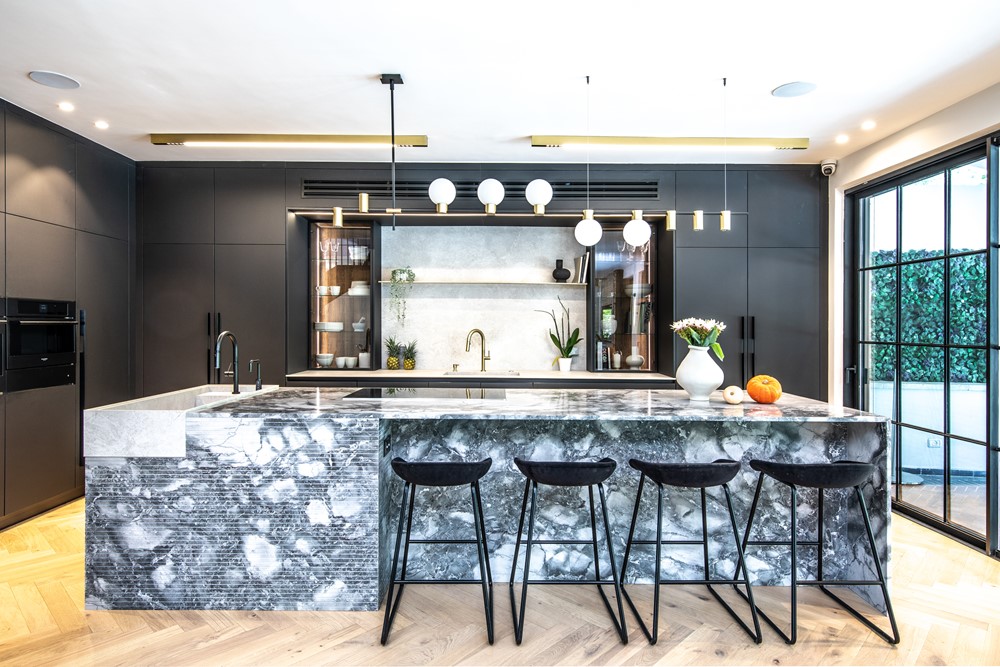
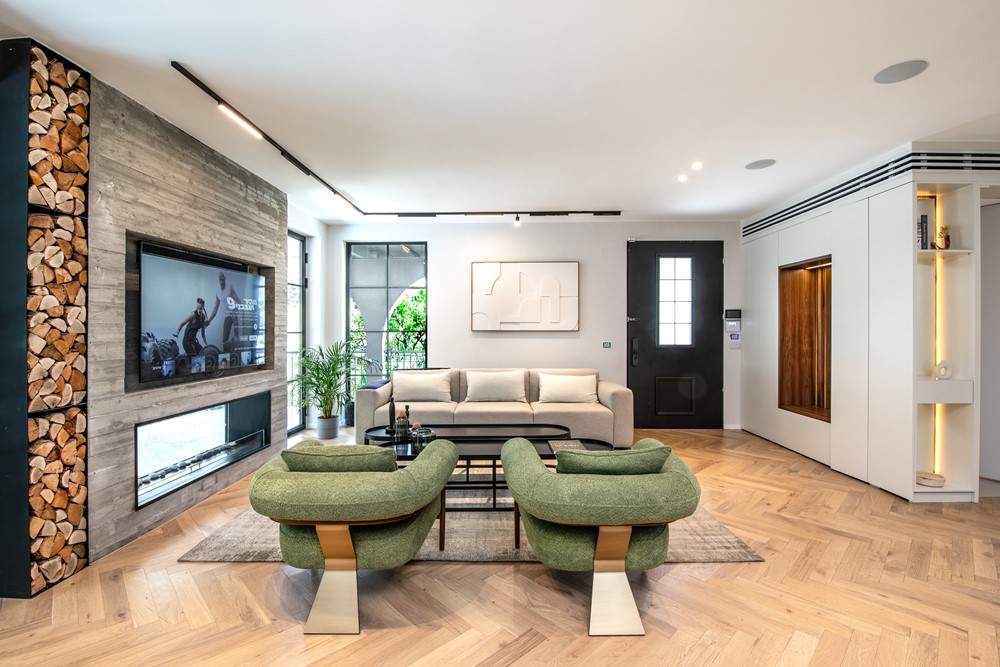
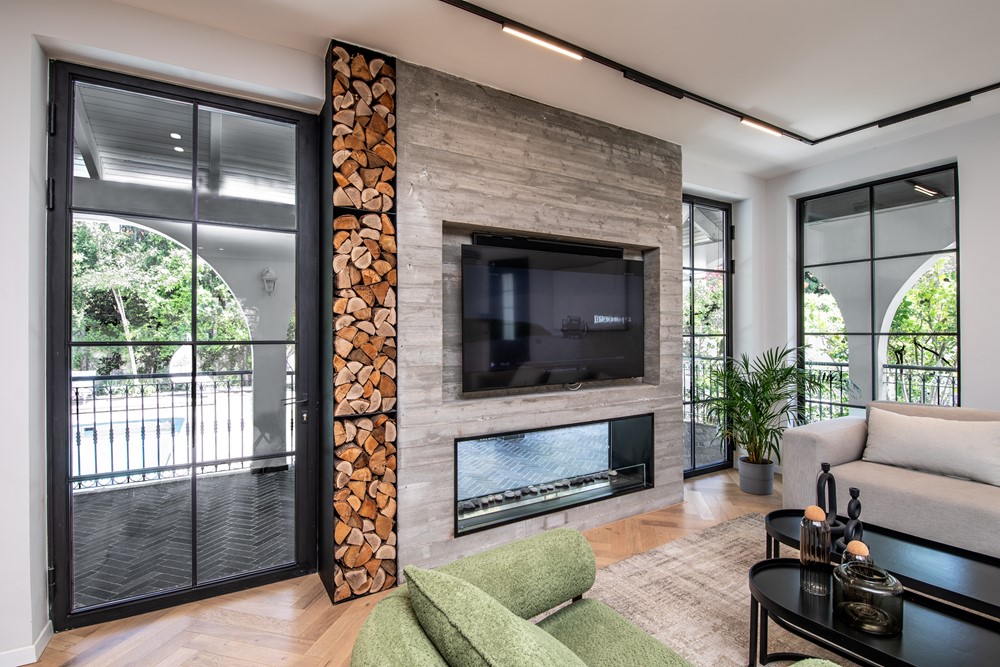
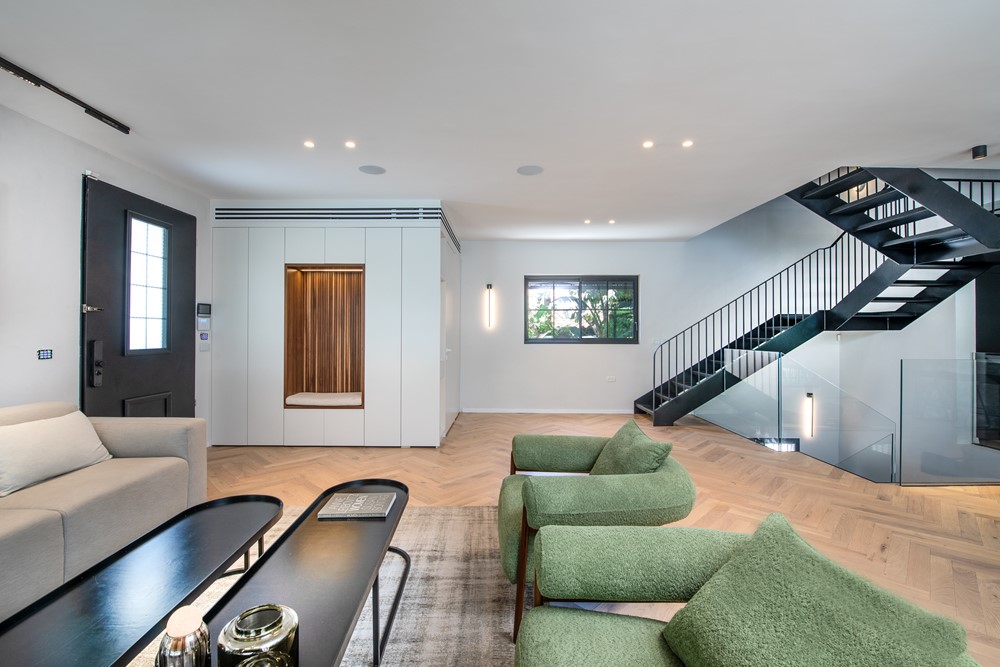
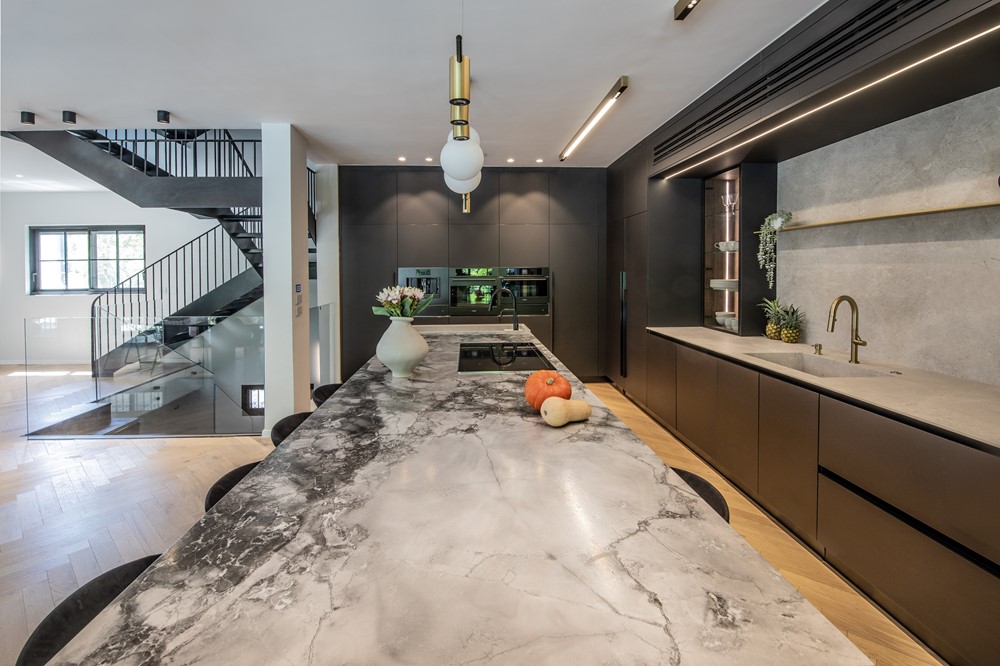
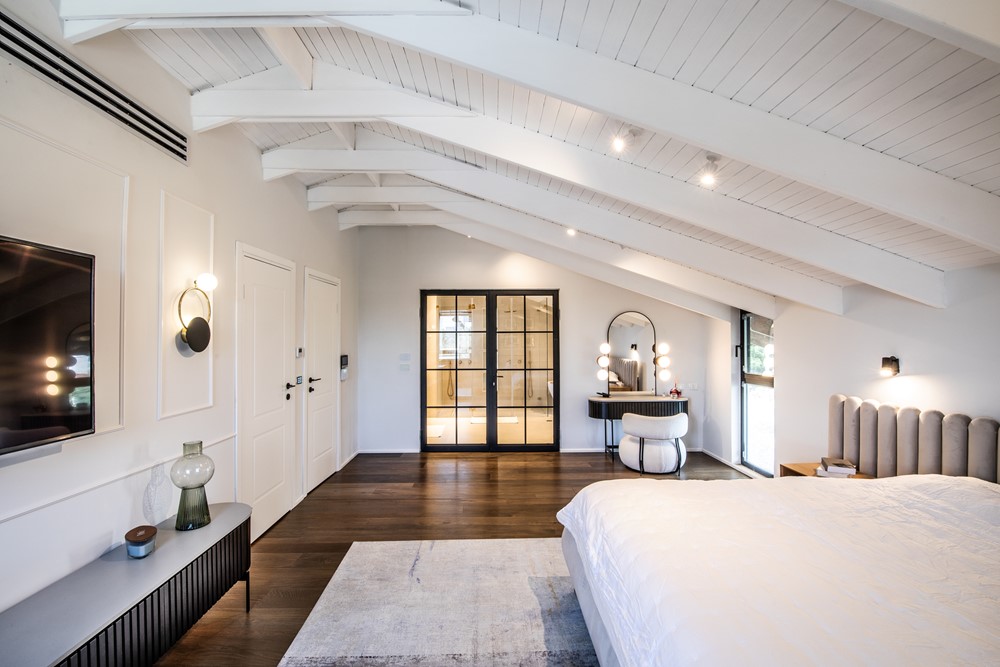
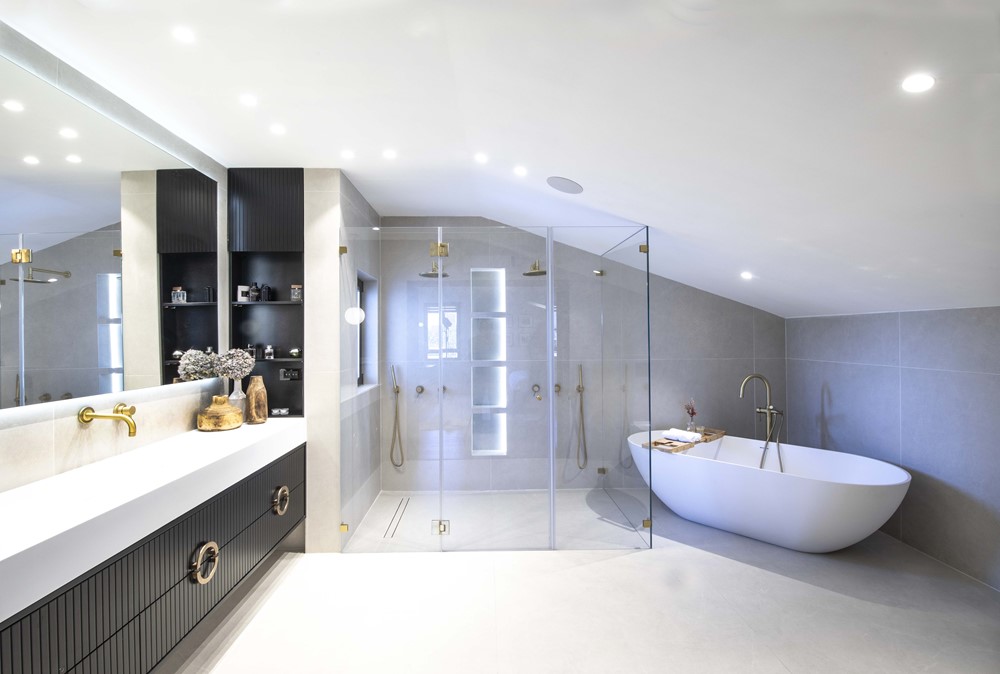
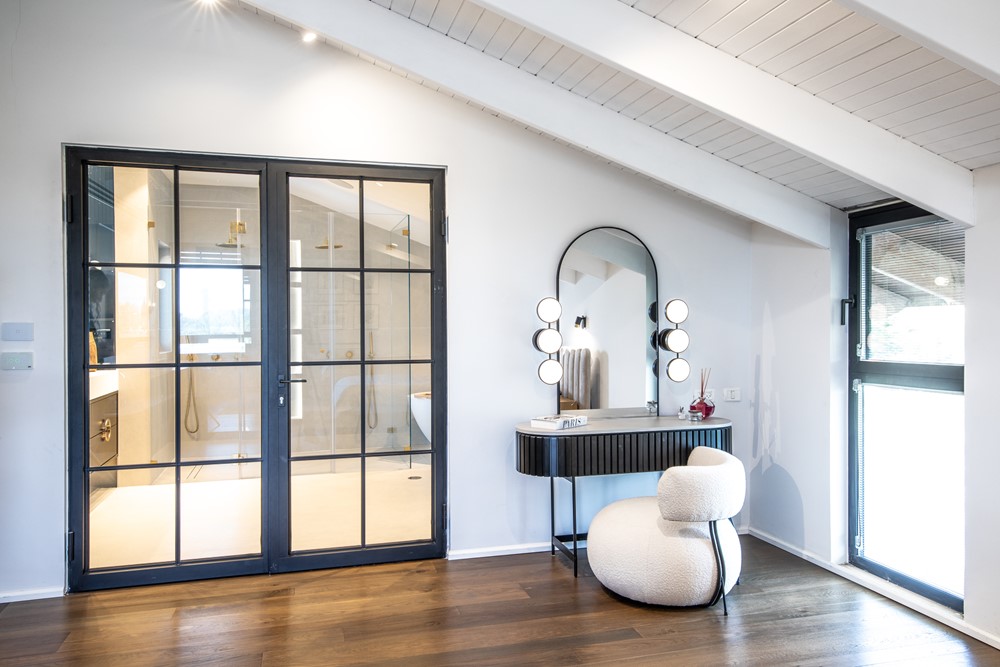
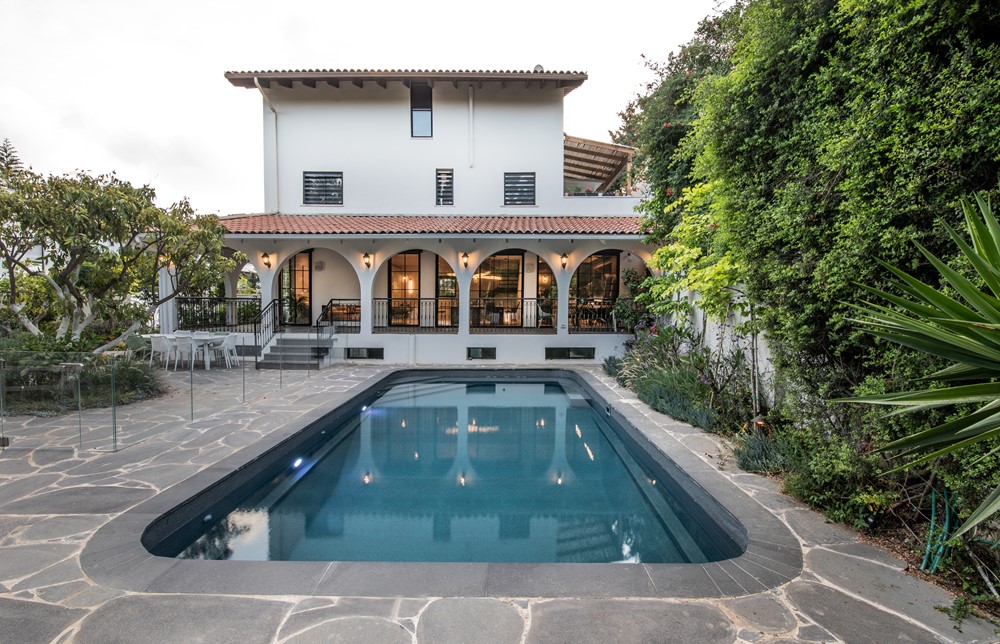
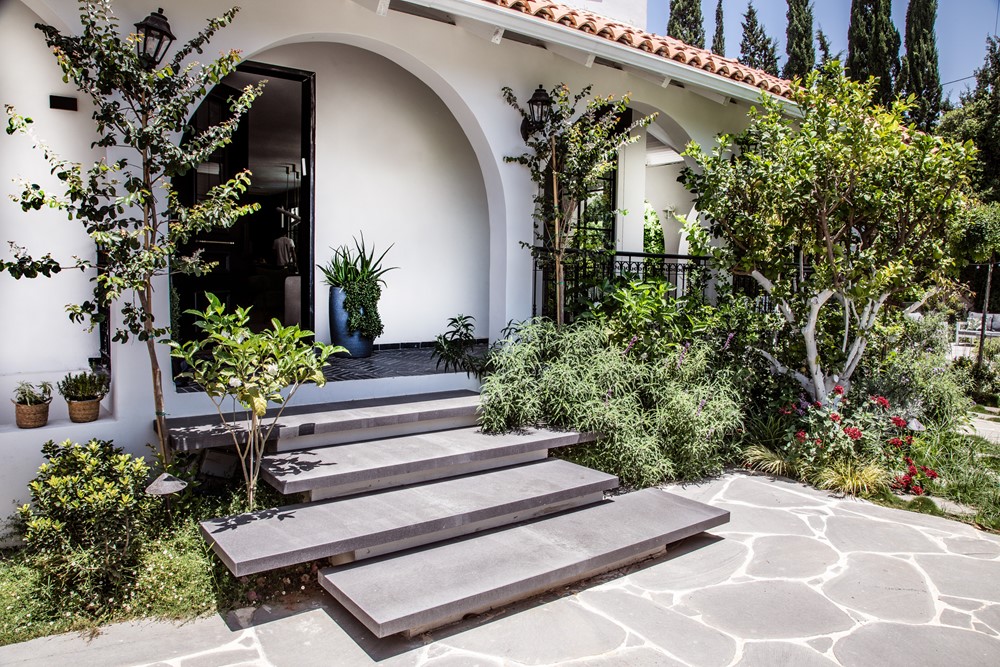
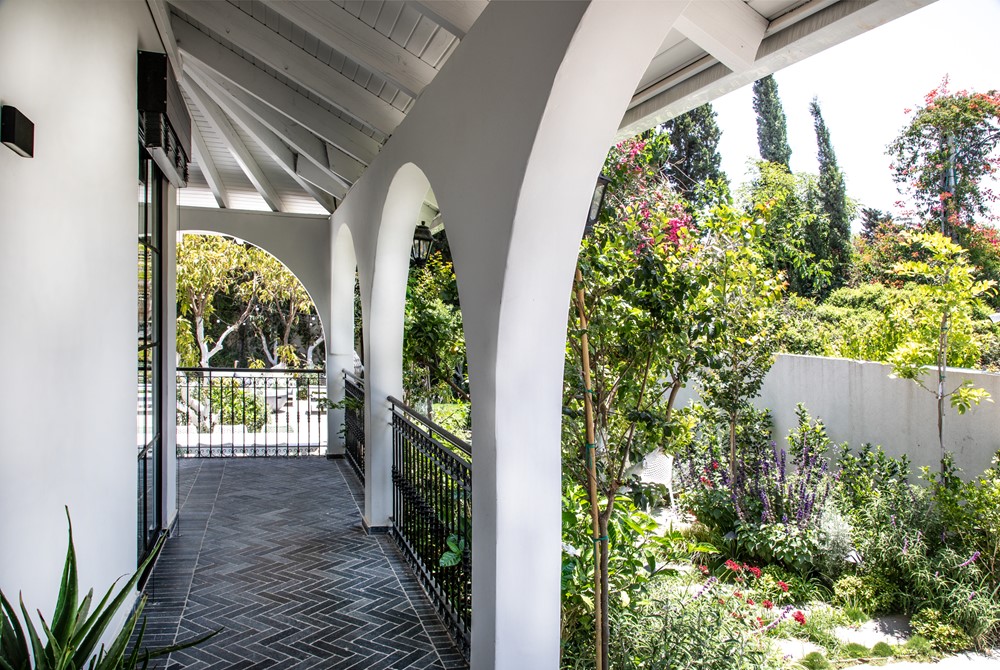
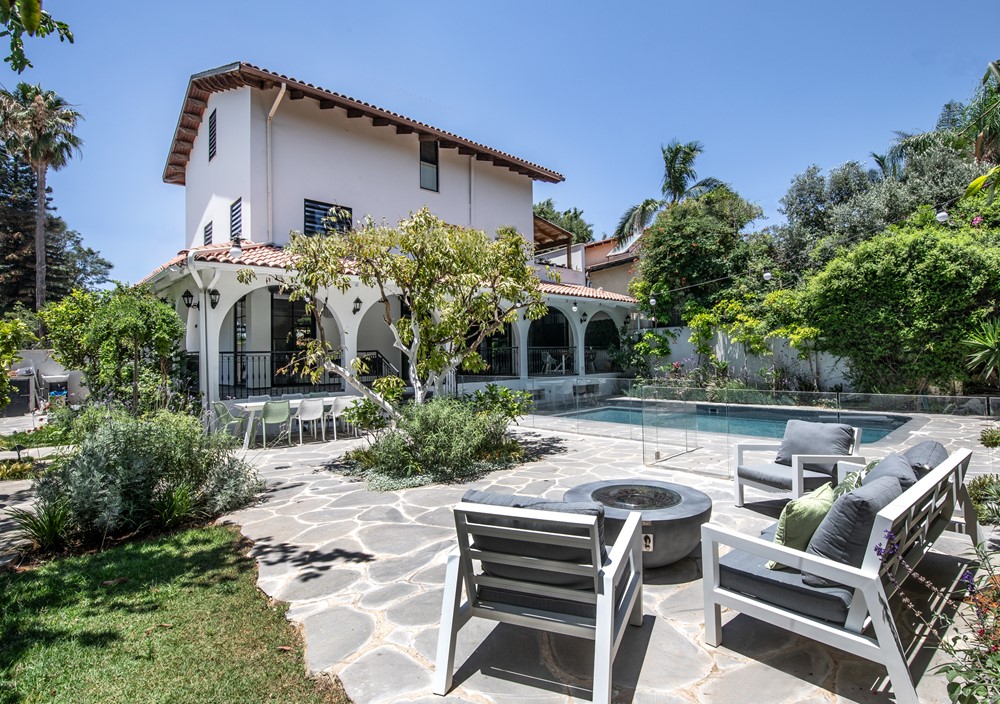
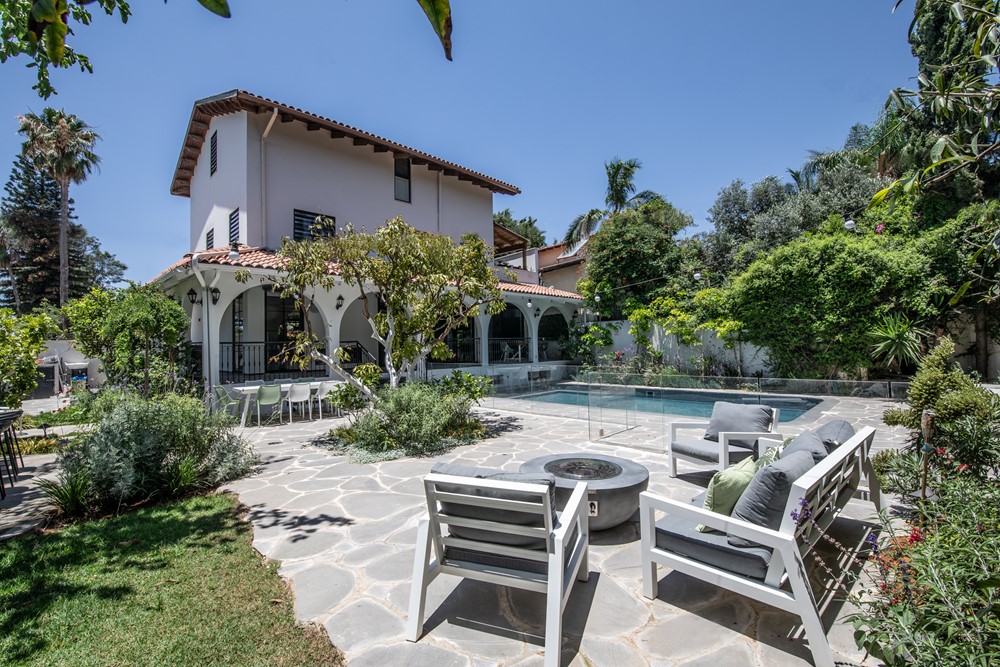
Welcome to a house built in the 1980s that was purchased by a couple with two children and recently completely renovated from the ground up to suit their needs. Before finding it, they had turned to architect Boaz Snir and together with him examined a number of properties – the romantic arcade framing the facades is ultimately what tipped the scales.
“When we first visited the house, naturally it looked dated but it was hard to ignore the potential – the impressive architectural structure, the large yard, the number of rooms and the size of the spaces made for an excellent planning canvas and ultimately we adapted the house precisely to the family’s taste and needs. In the next stage, interior designer Ayelet Shavo joined the process – I focused on deconstruction and changes to the structural elements and dividing up the interior, and she focused on choosing materials and dressing the home,” Snir recounts.
Before the renovation, the house (spread over 4 levels) contained quite a few engineering components that cluttered the division of spaces and required treatment. For example, supporting columns in the middle of the public space that created separation between the kitchen and living room. Moreover, upon entering through the lobby, guests went directly into the kitchen space, and the architect wanted to change that: “The columns created a block between functions and additionally, it makes much more sense for the living room to be the first space exposed to when entering, so we switched the locations: now the living room and dining area are at the front of the house and the kitchen is located in its inner section on the floor, also including a large pantry accessed through a concealed door in the cabinetry front. This created an uninterrupted, column and beam-free spacious area, open and ventilated,” explains Snir.
Another prominent element that changed completely is the staircase spanning the levels: “The old-fashioned concrete stairs we replaced with a modern steel staircase. At the house entrance I designed a guest bathroom which I wrapped in fixed carpentry – a sort of wooden box whose section near the entrance door contains cabinets, shelves and a bench for removing shoes. On its other side there is a concealed door leading to the actual bathroom facilities, a decorative niche with a mirror and concealed lighting, and a dedicated area where the home’s audio-video and smart home systems are housed,” he says.
The Spanish arches framing the house’s facades, the ones that cast a spell on the new owners, were decided to be preserved, and got a colorful upgrade: “Before the renovation the house was entirely painted in cream, brown and earth tones which we chose to replace with a contemporary palette based on shades of grey, white, black and light brown. The facades were painted a light color and the brown wooden beams framing them were painted in opaque white, adding visual crispness and making the home modern and contemporary,” he explains.
“The goal was to create an elegant, prestigious yet at the same time warm and pleasant living environment, a chic and modern yet simultaneously not too austere and very inviting domestic setting. We left the original tiled roof as is – it was in good condition and greatly contributed to the building’s authenticity, thus also preserving its past while integrating relevant additions that are faithful to the present and will hopefully remain relevant in the future as well,” says the architect.
Where: One of the Sharon cities in Israel
For:A couple in their 30s with two young children
Architectural design: Architect Boaz Snir
Styling and dressing: Ayelet Shavo
Photography: Ran Erde
